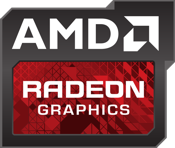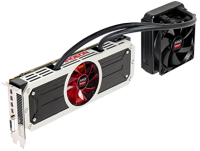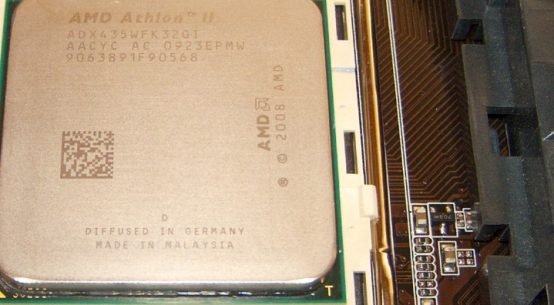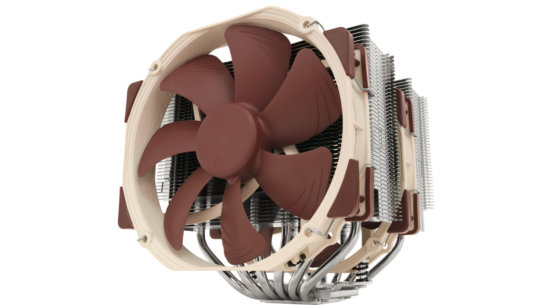Taticul DirectX-ului si unul din fostii oameni cheie ale corporatiilor AMD si Intel, revine in sanul familiei AMD pentru a isi exercita functia de Gaming Guru. Richard a fost destul de amabil sa ne ofere un interviu exclusiv, asa ca putem afla mai multe despre viziunea sa a unui mediu idilic, in care producatorii de hardware pot trai impreuna, pasnic. Interviul NU a fost tradus din limba engleza, in limba romana, tocmai pentru a nu altera ideile domnului Huddy, asa ca aveti lectura buna de citit in interviul de mai jos! Enjoy!
Paul Ghioca: Greetings Richard! Now we won’t dabble too much into the history of the Man Himself, but I would like it if we would first find out more about your decision to re-join AMD in their efforts to advance the GPU technologies of today and tomorrow.
 Richard Huddy: OK, just a little history of “the man himself”. In the late 90’s I worked in software rendering before I ever got into hardware, working on both the original Renderware team, and for a short spell with RenderMorphics who were eventually bought by Microsoft and went on to produce the first ever version of Direct3D. After that I went to work for a variety of hardware companies, 3DLabs, NVIDIA, ATI, AMD and Intel. And now I’m back at AMD in the most exciting role I’ve had to date – that of, “Gaming Scientist”.
Richard Huddy: OK, just a little history of “the man himself”. In the late 90’s I worked in software rendering before I ever got into hardware, working on both the original Renderware team, and for a short spell with RenderMorphics who were eventually bought by Microsoft and went on to produce the first ever version of Direct3D. After that I went to work for a variety of hardware companies, 3DLabs, NVIDIA, ATI, AMD and Intel. And now I’m back at AMD in the most exciting role I’ve had to date – that of, “Gaming Scientist”.
1. What are the specifics of your role as a Gaming Scientist?
I have two responsibilities, both of them connected with communications.
In my primary role I sit within the Office of the CTO and I’m responsible for bringing in the requests from games developers for new technology – and for representing those needs in the discussions about our future GPUs. That means that the interests of games developers are now front and center in AMD’s GPU decisions. In the first 6 months or so I’ll ramp up on what we’re doing in APUs and I’ll have similar responsibilities there too.
My secondary role is to communicate outwards. So I’ll be very visible explaining some of the technology decisions we’re taking and showing how they fit into our plans to bring the ultimate visual experience to every user in every market where we play. You may already have seen me engaged in interviews explaining how we work for the good of the whole of the PC gaming community by, for example, offering FreeSync as a VESA standard and how we’ve taken our own new API ‘Mantle’ not only to our own hardware but how we’ve shared our learnings with Microsoft to help improve DirectX too, so that all PC games players benefit.
2. Does the arrival of Richard Huddy at AMD mean that the company will open up more to the public and give us insights into the evolution of the AMD APU’s?
It will take me a little time to get to grips with what we’re doing with HSA to improve these highly integrated architectures well into the future, but over time, yes I’ll be out there explaining some of the decisions we’ve taken. Obviously that doesn’t mean I’ll be able to disclose many of the specific details of our roadmap, but I will talk about the big general pictures which help people understand where we’re going and why the world will be better for following that path.
3. In the past few weeks, AMD as a company has had a bit of a conundrum (NVIDIA Gameworks being aggressively pushed as a response to AMD’s success in consoles) regarding its major competitor and your statements in some interviews have been quite strong. Is there anything right now that you can do to bridge the gap between AMD and game developers who have opted to side with NVIDIA?
There are several things that we’re doing to bridge that gap.
Firstly we have a great working relationship with developers – most definitely including those using Gameworks. We work with them very closely to resolve all sorts of development issues along the way and it’s only in those rare cases. More usually we offer all sorts of technical assistance and it’s almost always very welcome.
Secondly we have an alternative to signing up to Gameworks. Any games developer is welcome to talk to us about joining the Never Settle games bundles which are part of AMD’s Gaming Evolved program – and they’ve been tremendously successful both for AMD and for the games developers and publishers.
4. On the subject of Mantle. How is that going forward when DirectX12 is knocking on our doorstep?
Mantle is a big deal for AMD going forward.
We currently have around 50 active registered developers working on PC titles. I’d guess about a third of those are using it just for the stepping stone to DX12 – and that’s certainly a good use for it. But for the other two thirds the use is quite different. These guys, like the developers of ‘Battlefield 4’, ‘Battlefield 4 Hardline’, ‘Dragon Age’, ‘Plants vs Zombies’, ‘Civilization Beyond Earth’, ‘Thief’ and others are doing this work because they know they can create an improved experience right now, and that planned iterations of Mantle will let them do that well into the future. We’ll publish the full spec for Mantle 1.0 this year, and then we’ll work to improve it, adding support for the new features as listed in the current DX12 spec from Microsoft , adding support for more optimizations for our GCN graphics hardware, and for the other features that we’ll add when DX12 has been shipped and it too needs an update. Graphics doesn’t stop at DX12 – so why would Mantle?
5. Ultimately, isn’t AMD better off on investing time and resources in ensuring that its tools are invaluable? Like you know, bringing out all the big guns so that every vendor would consider using something that looks advantageous for the competition (I’m talking about NVIDIA of course) as well?
One of the most impactful tools we’ve built in recent years in Mantle. I think it’s fair to say that Mantle has changed the way people think about low-level APIs’. Back in September 2013 there were no low-level APIs anywhere. In October we announced Mantle, and in March 2014 Microsoft announced that DX12 was in development, then in early June this year Apple announced their own low-level API “Metal”. If you’re looking at the industry and trying to understand it then you can clearly see a tidal wave of change which has been led by AMD.
 So I think it’s fair to say that Mantle has been an impressive vehicle through which AMD has changed the world for the better. We now have tools and APIs emerging which solve developers’ problems – and which are exactly what developers have been asking AMD for…
So I think it’s fair to say that Mantle has been an impressive vehicle through which AMD has changed the world for the better. We now have tools and APIs emerging which solve developers’ problems – and which are exactly what developers have been asking AMD for…
You’re right to imply that we have finite resources – and we need to spend them wisely. But given the enthusiasm shown by developers and OS vendors I find it hard to see how we could ever have spent this effort more impactfully!
And this is a fundamental difference between AMD and NVIDIA. You mentioned Gameworks in the previous question, so let’s compare that to AMD’s approach with Mantle… Gameworks is an exclusive (sometimes PC only, and sometimes NVIDIA only) piece of middleware supplied in DLLs which make it hard for developers to use and impossible to fully understand and for which NVIDIA charges money. Contrast that with AMD and Mantle – where AMD has been very open in sharing information with Microsoft and we’ve seen the announcement of the newest version of DirectX (which will help every PC gamer), for which AMD charges nothing, and which allows every owner of modern AMD graphics hardware to get the full value from an increasing library of games. AMD is solving problems which exist in the PC gaming ecosystem and moving the industry forward faster than any other company I know.
Right now AMD makes the single fastest PC gaming card on the market – that’s the AMD Radeon™ R9 295X2. We do that because of our total commitment to delivering the very best that a gamer can get. We have an completely open SDK available in source code form, and we continue to develop new effects there too. For example TressFX (seen first in Tomb Raider) has been updated and published on our website prior to its integration in future games. We’re doing everything we can to keep innovation at the center of PC gaming – trust me!
In that case, thank you for taking the time to answer these questons and best of luck going forward with AMD.



